It’s often been said that the true measure of a person can be told by the enemies they make. And since the DC Universe is home to the world’s greatest heroes, it stands to reason that they must have earned the world’s greatest villains to match. But these historic rivalries don’t happen overnight. Often, it takes some time for a great hero to find the nemesis who completes them.
How much time exactly? Well, that question is precisely why we’ve assembled an easily consultable guide for you of the path taken from the creation of DC’s champions to their most persistent antagonists.
Hawkman and Hawkwoman/Hath-Set
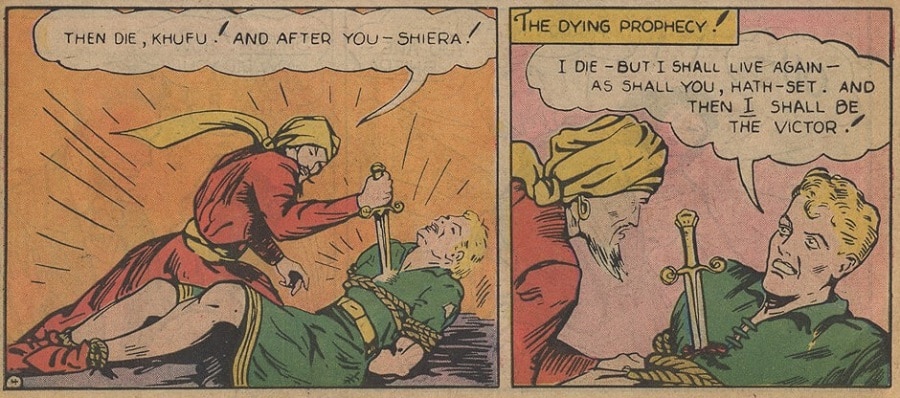
Hero Debut: Flash Comics #1, November 1939
Villain Debut: Flash Comics #1, November 1939
Time it Took to Find their Nemesis: Hate at First Sight
While some heroes take years to find their one true villain, sometimes it just happens right away—particularly when that villain happens to be baked right into the hero’s origin story.
When we first meet Carter Hall, a sudden flashback transports his mind back to his past life as Prince Khufu in ancient Egypt, when the priest Hath-Set separated him from his love Shiera in death. With his dying breath, Khufu curses Hath-Set that they should meet again in another life and settle the score.
Khufu couldn’t have possibly known just how prophetic those words would prove. As the Hawkman mythology has expanded over more than eighty years, the forever reincarnating triumvirate of Carter, Shiera and Hath-Set have been forever entwined in every generation, and every iteration of continuity, before, after and in between. Though perhaps not the most well-known rivalry in DC’s storied halls, Hastor and the Hawks may be the most essential and inescapable of them all, for one may never exist for long without the other two.
Batman and Robin/The Joker
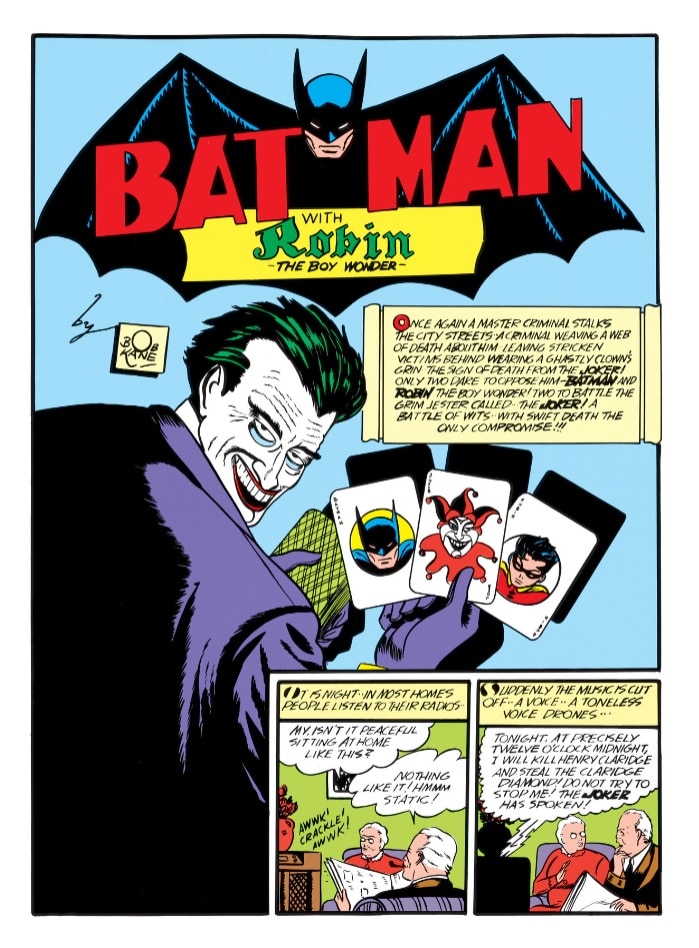
Hero Debut: Detective Comics #27, April 1939
Villain Debut: Batman #1, April 1940
Time it Took to Find their Nemesis: 1 year
Even with a debut in the first issue of Batman’s solo series, only a year after Batman’s first appearance, the Clown Prince of Crime still rates second, at best, on the list of the Dark Knight’s most essential supporting cast. Because as you can see from his first appearance, pictured above, the Joker was never Batman’s nemesis. From the very start, he always belonged to Batman and Robin. And that small tardiness is one that the Joker has spent his entire history trying to make up for.
Try and list the top three most villainous things the Joker has done to Batman. Or the top five. Or ten. Now, how many of those are actually things he’s done to Batman, and how many are what he’s done to the people Batman cares about? The Joker’s greatest agony, you see, is that he will never be Batman’s alone, no matter how many Batgirls he shoots or Robins he explodes. While even Batman may consider the Joker his greatest enemy, the Joker’s bane is Batman’s family.
Superman/Lex Luthor
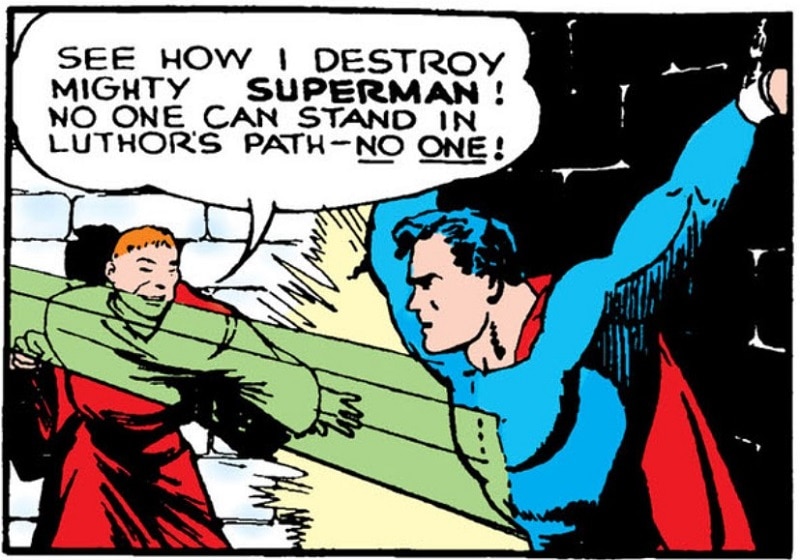
Hero Debut: Action Comics #1, May 1938
Villain Debut: Action Comics #23, February 1940
Time it Took to Find His Nemesis: 1 year, 9 months
It’s hard to imagine a world where the Man of Steel didn’t have Lex Luthor, the world’s greatest criminal mastermind, dogging at his heels. But a Luthorless Superman was the one that the world fell in love with in 1938.
In his first year of adventures, Superman’s all-too-real rogues gallery consisted of war profiteers, worker-mistreating venture capitalists and unsafe drivers. The simple concept of Superman was that of an invincible man present to solve everyday problems, and for nearly two years, it was enough.
In Action Comics #13, Superman would find his first recurring nemesis in the Ultra-Humanite, but it was in Luthor that Superman found the true brain to oppose his brawn. With a head of red hair and initially no first name, Luthor’s schemes gave Superman a unique opportunity to prove that he could do more than solve a problem with his might and morality—he could also overcome the ingenuity of an evil genius through his own craftiness. Villains and rivals to Superman boasting comparable powers to his own have come and gone, but it’s this battle of wits which has kept Luthor at the center of Superman’s vile retinue.
Wonder Woman/The Cheetah
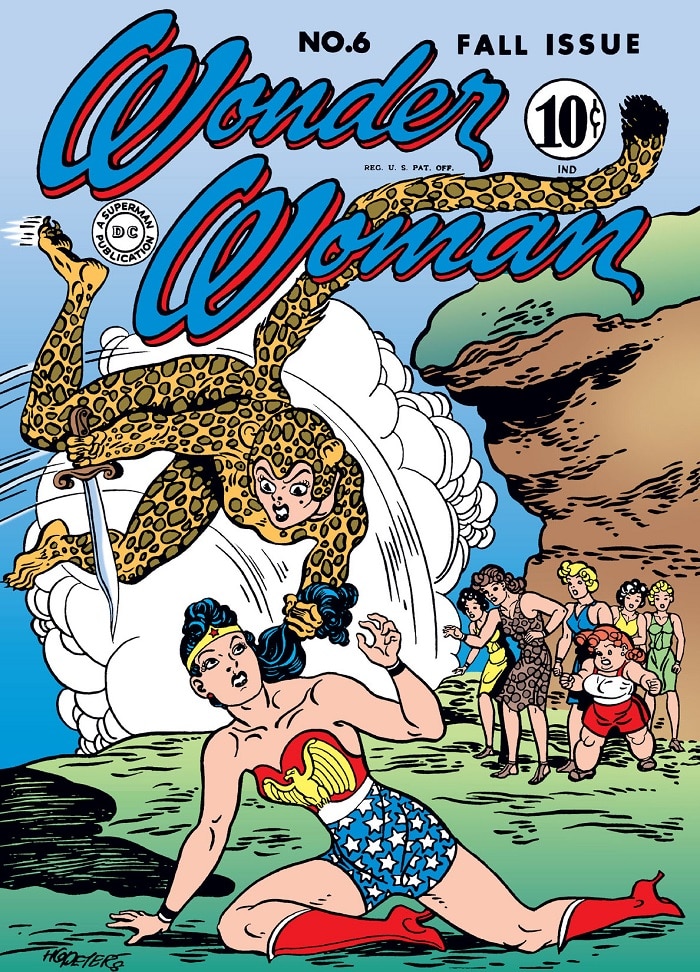
Hero Debut: All-Star Comics #8, October 1941
Villain Debut: Wonder Woman #6, August 1943
Time it Took to Find Her Nemesis: 1 year, 10 months
The wild imagination of Wonder Woman’s early years produced a regular parade of inventive villains. Not content to stop with the invitation of Ares, the God of War into Wonder Woman’s backstory, William Moulton Marston created a wide variety of original villains to oppose the Champion of Truth. Doctor Poison, the Duke of Deception, Paula von Gunther, Doctor Psycho—but none of these early foes have the sheer stage presence of the Cheetah, with her animal prints and seething hatred for Diana and her message of love.
Like all of Wonder Woman’s original villains, Marston created the Cheetah with a social message in mind. In Cheetah’s case, it was the wasteful folly of jealousy among women when they should be joining in sisterhood against their male oppressors. From Priscilla Rich to Barbara Ann Minerva, there have been a number of women who have used the Cheetah name, but the envy they have for Wonder Woman and her station has always remained paramount to her character. Every girl wants to be Wonder Woman. But if the Cheetah can’t be her, then she’ll destroy her.
Green Lantern/Sinestro
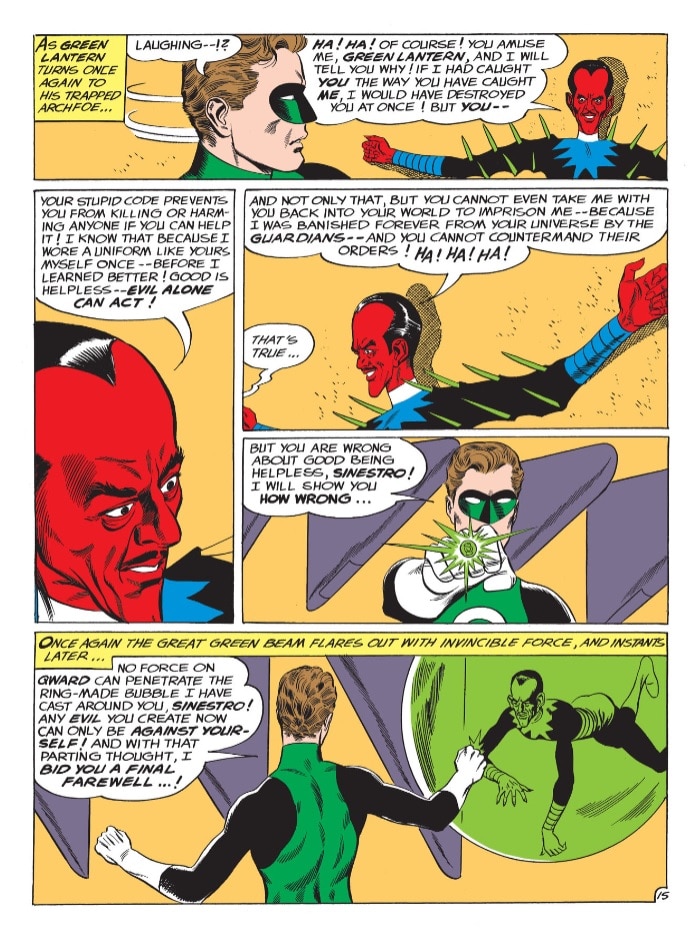
Hero Debut: Showcase #22, July 1959
Villain Debut: Green Lantern #7, May 1961
Time it Took to Find His Nemesis: 1 year, 10 months
The relationship most important to Green Lantern stories from the start of the Silver Age to this day has always been the tension between the emerald warriors and their ring-giving masters: the Green Lantern Corps and the Guardians of the Universe. After all, anyone who bestows that title on themselves, no matter how well-intentioned, is going to create some friction with a universe which did not ask for them. Even in the earliest stories of Hal Jordan as the new Green Lantern of Sector 2814, Hal begins making discoveries about his duties and the Guardians he must answer to—the most compelling of which being his discovery of Sinestro, a formerly revered Green Lantern who became a tyrant.
The question Sinestro’s history presents is one which would haunt the Green Lantern series for generations to come. Is Sinestro’s fall an aberration, or is it the story of the Guardians themselves in miniature? Does stewardship of any principality, be it a nation, or a world, or the entire cosmos, inevitably result in the loss of freedom over those you initially swore to protect? It’s a moral quandary more nuanced than we often see in comics of this idealistic era, and the engine which has driven Sinestro’s conflict with Jordan since their first encounter.
The Flash/Reverse-Flash
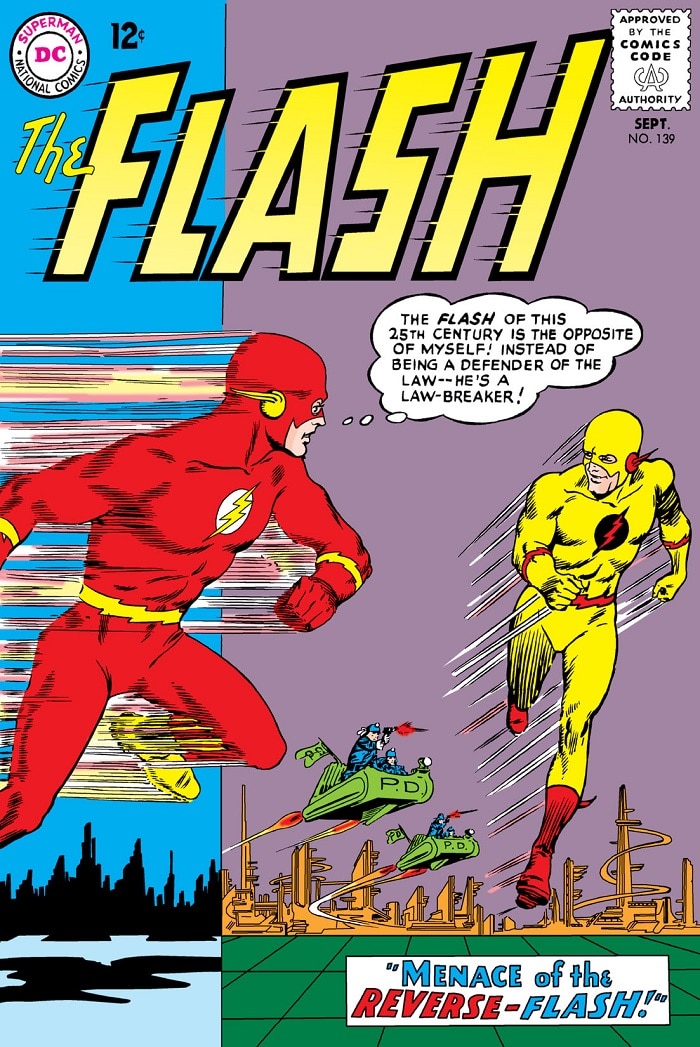
Hero Debut: Showcase #4, July 1956
Villain Debut: The Flash #139, July 1963
Time it Took to Find His Nemesis: 7 years
Now we’re starting to get into the territory of heroes who have taken a little bit longer to find their nemeses. In the case of Barry Allen, it’s because most of the villains who opposed him in his early years were simply no real match for the Fastest Man Alive. Each of them—Captain Cold, Heat Wave, Captain Boomerang, Mirror Master, Weather Wizard, and so many others—were iconic in their own right, to be sure. So much so that in DC circles, when you simply mention “The Rogues,” you’re always assumed to be talking about the Flash’s villains. But each of these colorful villains were little more than speed bumps to the Flash, until he met his match in Eobard Thawne.
With Thawne’s knowledge of the Flash from the distant future, his ability to travel easily through time and his unquenchable desire to make his enemy’s life a living hell, Reverse-Flash poses a terrifying threat whenever he appears. Each of the most dramatic turns in the life and death of Barry Allen have had Thawne somewhere behind them, planning his downfall from the start through impossible twisting branches of spacetime. Gorilla Grodd can pound his chest all he wants, but there’s only one face that ever comes to mind when you read the phrase: “It was me, Barry.”
Aquaman/Black Manta
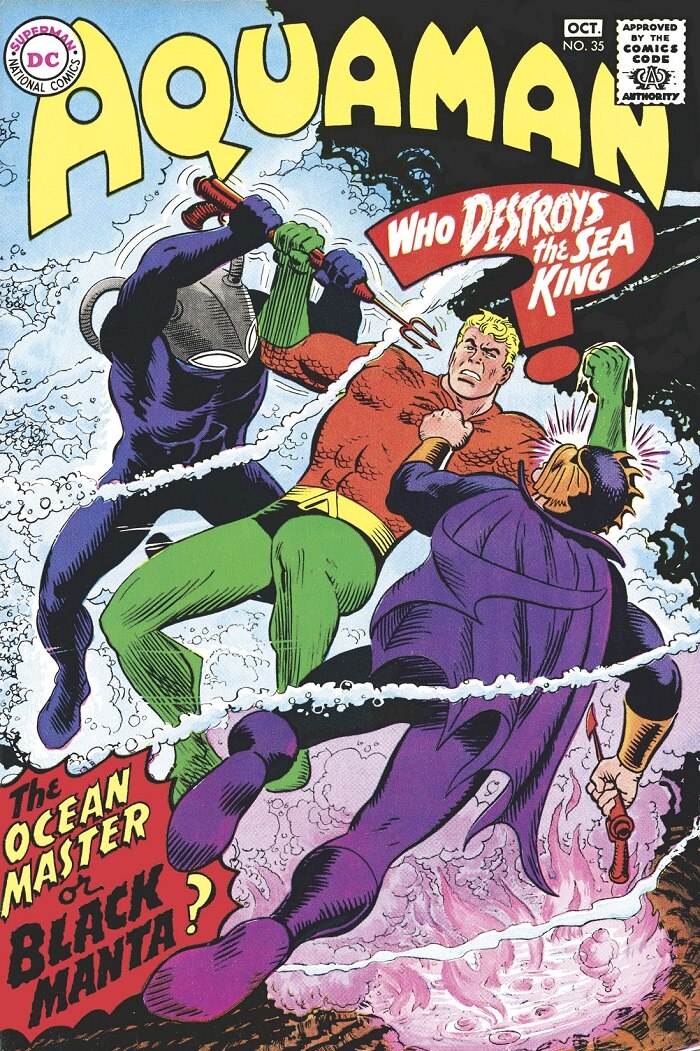
Hero Debut: More Fun Comics #73, September 1941
Villain Debut: Aquaman #35, June 1967
Time it Took to Find His Nemesis: 25 years, 9 months
With the passionate hatred that Black Manta harbors for the King of the Seas, you might think they were destined enemies from the very beginning. In fact, it wasn’t until well into Aquaman’s own solo series, a quarter century after his creation, that Black Manta would darken his ocean for the first time. Before that, it was Aquaman’s duplicitous half-brother, the Ocean Master, who laid claim to the title of Arthur’s arch-nemesis…for six issues.
Scant months after establishing Orm’s family vendetta, the mysterious Black Manta swam into the angler fish spotlight to steal even that from him. I mean, look at that cover. The first time we see him, Black Manta is literally wrestling Ocean Master’s sworn enemy away from him. And wouldn’t you know it, over fifty years later, one of the villains on this cover has their own comic book, and the other…well, seems like poor Ocean Master can’t catch a break.
Green Arrow/Merlyn
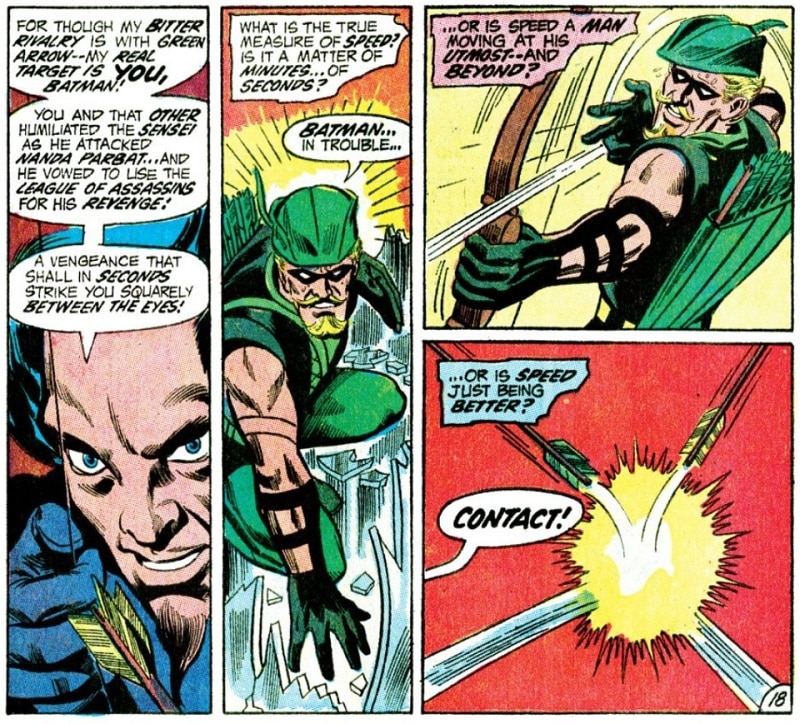
Hero Debut: More Fun Comics #73, September 1941
Villain Debut: Justice League of America #94, September 1971
Time it Took to Find His Nemesis: 30 years
Green Arrow was Aquaman’s debut twin, with each hero celebrating their 80th anniversary this year. But because he lacked a series of his own until years after his debut, Oliver Queen had little space to build up a rapport with a true nemesis. Fortunately, before finally getting his own comic, Green Arrow got an early—well, relatively speaking—shot at an archer-enemy with Justice League of America #94.
In the early 1970s, Denny O’Neil and Neal Adams were slowly building the omnipresence of the League of Assassins throughout the DC Universe. A master archer was a natural fit for such a clandestine crew, and Merlyn was created as an old, heretofore unseen rival of Oliver’s for a rare JLA story focused on the Emerald Archer’s past. Since then, Merlyn has retained the status of Green Arrow’s greatest enemy more or less by default. Because unlike his Justice League counterparts, who may get distracted from their missions by colorful adversaries, Oliver Queen has always kept his central focus on doing everything he can to make the world a better place—and not just use his bow to battle for the status quo.
Martian Manhunter/Ma’alefa’ak
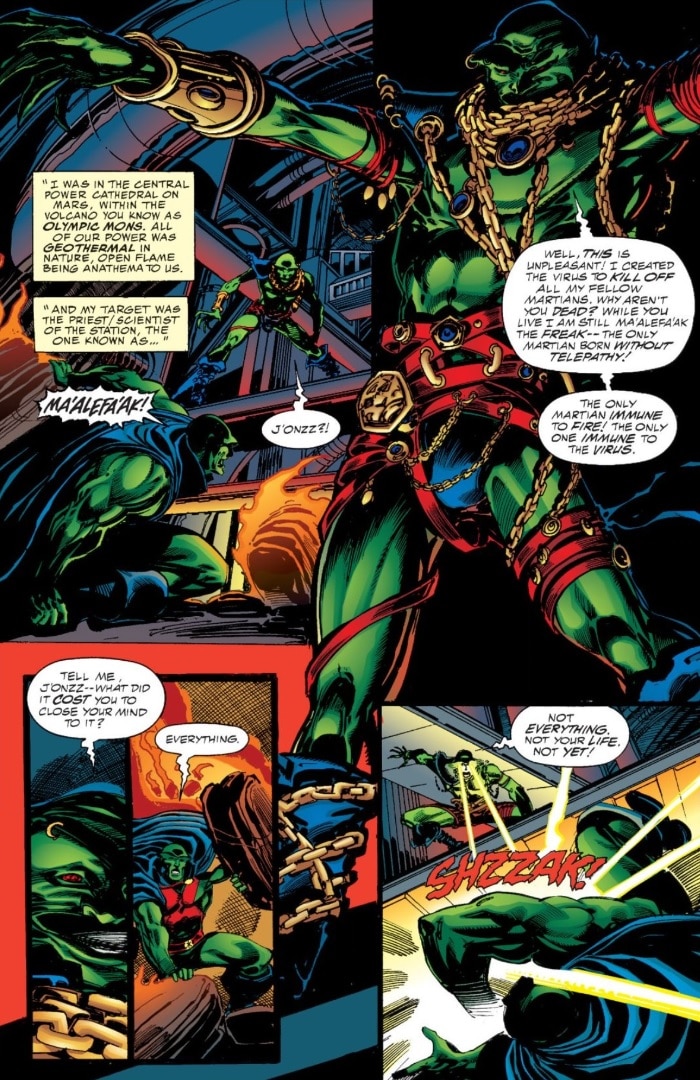
Hero Debut: Detective Comics #225, September 1955
Villain Debut: Martian Manhunter #0, August 1998
Time it Took to Find His Nemesis: 42 years, 11 months
J’onn J’onzz has always been a team player. Though introduced as a Silver Age-tinted backup feature to Batman in Detective Comics, Martian Manhunter made a name for himself as the heart and soul of the Justice League in nearly all its forms.
Arguably the most powerful hero on the team, J’onn’s distance from the Martian he was when his homeworld thrived had nevertheless excluded him from amassing a team of villains of his own. The Justice League was his family, and any villains he faced, he faced with the League by his side. This remained the case for over forty years, until John Ostrander revealed the truth behind the end of the Martian race. Their genocide had in fact been perpetrated by his own mad brother, Ma’alefa’ak, driven to exterminate his own people over his inability to telepathically communicate with his fellow Martian.
And you must know what this means. Now, Ocean Master doesn’t even get to claim he’s the most villainous brother of a Justice Leaguer! Somebody check on Orm and tell us if he’s doing okay.
DC FanDome returns on October 16, 2021! For more articles like this one, and to stay up to date on all the latest news, visit dcfandome.com.
Alex Jaffe is the author of our monthly "Ask the Question" column and writes about TV, movies, comics and superhero history for DCComics.com. Follow him on Twitter at @AlexJaffe and find him in the DC Community as HubCityQuestion.




















